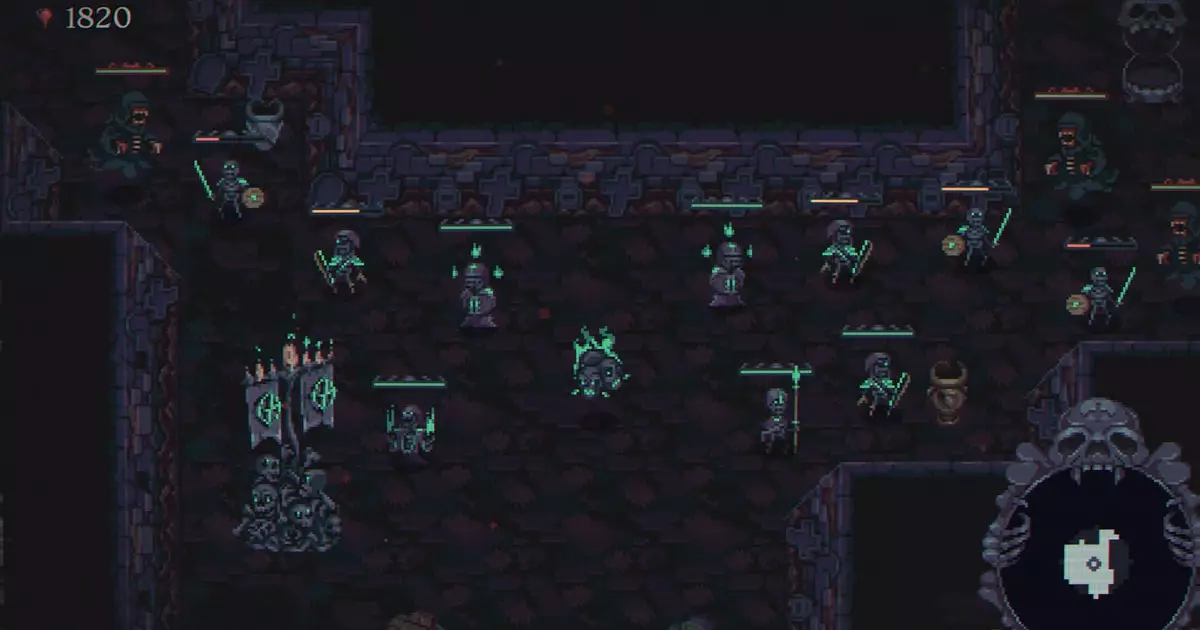In the crowded realm of indie gaming, the emergence of innovative concepts often leads to a refreshing experience for players seeking something beyond traditional genres. “Skull Horde,” a unique blend of auto battler mechanics and dungeon crawling, invites players to step into the shoes of a necromancer avatar—nothing more than a whimsical flying skull. This playful yet dark character design sets the stage for a gaming experience that eschews the conventional hero trope in favor of commanding a legion of animated husks, epitomizing a reversal of the classic battling dynamic.
What differentiates Skull Horde from more mainstream action-RPGs like “Diablo” or “Path of Exile” is its approach to combat. Instead of micromanaging characters in a frantic setting, players can place their confidence in the autonomous capabilities of summoned minions. This shift allows players to engage in strategic decision-making without being bogged down by the stress of real-time action. The real-time battles unfold organically, allowing players to immerse themselves in exploration while their units handle the chaos of combat.
Furthermore, the game enriches its strategic depth by incorporating unit upgrades and mergers. This mechanic of combining less powerful units to create stronger counterparts, alongside the ability to explore various loot options within dungeons, creates an ecosystem rich with possibilities for customization. Players are encouraged to consider their unique team dynamics, building a squad that thrives on synergy—a nod to the strategic elements often found in MOBAs and other team-based games.
One of the standout features echoes the incremental gameplay models that have garnered a dedicated following in recent years. Similar to “To The Core,” Skull Horde provides rewarding progress by allowing players to gather resources and power-ups that carry over between runs. This element of persistence contrasts sharply with other roguelite designs that may feel punishing or overly challenging, ensuring that players are constantly rewarded for their efforts. The developers’ previous success with “Bore Blasters” provides credence to the design philosophy, as they have proven their ability to craft engaging gameplay loops that keep players returning for more.
Scheduled for release in 2025, Skull Horde stands poised to capture the attention of gamers with its inventive mechanics and attractive pixel-art design. While the teaser trailer primarily showcases cinematic moments, it does evoke excitement about its imminent gameplay reveal. As players yearn for alternatives to traditional grind-heavy RPGs, a game that combines the simplicity of auto-battling with dungeon exploration presents an enticing proposition. The marriage of charming aesthetics and strategic depth could well yield a significant impact on the indie gaming landscape, promising a compelling adventure that resonates with both new and seasoned players alike.

